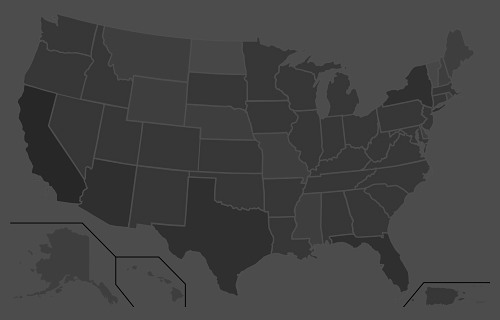“Our added winter moisture and active calling period led to a very long nesting and hatching season, starting in late April and extending into early summer, with chicks hatching as late as early July,” O’Dell said. “From a population standpoint, we are out of a deficit for the first time since 2001-2002. Quail are starting to pop up in places they haven’t been seen in a while.
“If you’ve never had the chance to experience what Arizona quail hunting built its name on, then this would be the year to get out and enjoy it.”
Meanwhile, hunters should note that the season for Mearns’ quail doesn’t begin until Dec. 4. It’s summer rainfall that plays a key role in nesting success and population numbers of this species. After a spotty and relatively weak monsoon across southern Arizona, these birds are likely to be abundant only in pockets that received sufficient precipitation this summer.
A valid Arizona hunting or combination hunt and fish license is required for all hunters 10 and older. Those hunters under 10 must either have a valid hunting or combination hunt and fish license, or be accompanied by an adult who possesses a valid hunting or combination hunt and fish license. Licenses can be purchased online or at license dealers statewide. A youth combination hunt and fish license (ages 10 to 17) is $5.
The general bag limit is 15 quail per day in the aggregate, of which no more than eight may be Mearns’ quail (when the Mearns’ season opens Dec. 4). The general possession limit is 45 quail in the aggregate after opening day, of which no more than 15 Gambel’s, scaled or California quail in the aggregate may be taken in any one day. After the opening of the Mearns’ season, the 45-quail possession limit may include 24 Mearns’ quail, of which no more than eight may be taken in any one day.
More quail-hunting information can be found on the department’s website at https://www.azgfd.com/Hunting/. Another resource for both new and experienced hunters alike is “An Introduction to Hunting Arizona’s Small Game.” Written by Randall D. Babb, the 196-page, full-color book covers where and how to hunt small game birds (like quail), squirrels, rabbits, ducks and geese. It also includes how to prepare and cook your harvest, with illustrations and recipes. The book can be ordered for $16.95 at www.azgfd.gov/publications.
Finally, hunters should check out O’Dell’s techniques for field-dressing quail at https://www.youtube.com/watch?v=3gRwZAcWzzk.
####
Publishers Notes: OUT OF STATE HUNTERS, FISHERMEN & OUTDOOR ENTHUSIASTS; Due to the Covid 19 pandemic, there could be limitations for OUT of STATE hunters, fishermen and other outdoor enthusiasts to include a 14-day quarantine requirement or negative COVID-19 testing alternative. Please check with the State's Department of Natural Resources BEFORE you travel or apply for the 2020 Fall Hunts.
Disclaimer: The views expressed on this site are that of the authors and not necessarily that of TBC Press
The Connecticut Department of Energy and Environmental Protection (DEEP) is pleased to announce a surprise “bonus fishery,” recently stocking close to 500 Lake Trout in select waters around the state!
Averaging between 24-36 inches in length, and weighing between 5-7 pounds, these fish are ready to catch in the following waterbodies, stocked last week: Winchester Lake, Coventry Lake, Tyler Lake, Squantz Pond, and Bigelow Pond. There is no expectation that these fish will holdover for an extended period of time (years) or that they will reproduce. The intent in stocking them is strictly to provide Connecticut anglers with a specialty fishery, enhancing late season and winter fishing opportunities.
The fish come from the U.S. Fish & Wildlife Service’s Berkshire National Fish Hatchery out of New Marlborough, Massachusetts, where they raise Lake Trout for restoration efforts in the Lower Great Lakes.
Connecticut DEEP Announces Special Bonus Fishery of Lake Trout
Submitted by: TBC Press
Posted on: 11/30/20
The Backcountry Press
The country's premier daily HUNTING, FISHING & OUTDOOR news in the USA and around the globe. Read whats happening in your neck of the woods & beyond.
© 2020 TBC Press - All Rights Reserved Website Design by:
News # 14105
While these recently stocked fish won’t break the state record in the harvest category (the largest fish by weight), they should provide the catch of a lifetime for many, and for the possibility of filling the state record in the “Catch & Release” (the largest fish by length) category created just this year. For more information on state record fish and the Trophy Fish Award program, please visit https://portal.ct.gov/DEEP/Fishing/General-Information/Trophy-Fish-Award-Program.
As Lake Trout are considered trout along with brooks, browns, rainbows, and tigers, there will be no special rules or regulations applied with this specialty stocking; therefore, the standard statewide regulation of 5 trout per day applies to all stocked Lake Trout as well. The lone exception is in Squantz Pond during the month of March, when there is a 16” minimum length daily creel limit of 1 trout.
Please share photos of the Lake Trout you catch with us on Facebook! Also, please complete this survey after each Lake Trout fishing trip. Results from surveys like this help us better manage our fisheries and provide you with the opportunity to provide data/comments that factor into our decision-making process. Good luck, and please continue to practice social distancing if venturing out for a fishing trip. Tight lines!
####
Publishers Notes:
Our country is still battling COVID-19. To avoid the spread of this virus and continue to enjoy outdoor activities, ALL outdoor enthusiasts (man, woman, child) should follow the guidelines set by nps.gov. These guidelines include; social distancing, the Leave No Trace principles, including pack-in and pack-out, to keep outdoor spaces safe and healthy.












